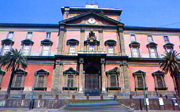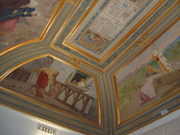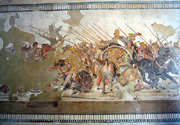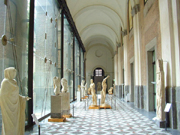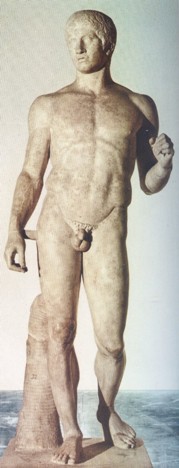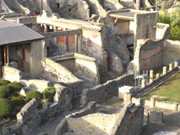
TOUR OF THE ARCHAEOLOGICAL MUSEUM OF NAPLES (POMPEII MUSEUM) + HERCULANEUM RUINS
Details
DURATION: | 7/8 hours approximately | |
PRICE: | View the price list | |
AVAILABILITY: | All-year-round | |
INCLUDES: | Private English-speaking guide in the museum (for two hours) THE ENTRANCE FEE IS NOT INCLUDED. ADMISSION OF THE ARCHAEOLOGICAL MUSEUM: ADMISSION OF THE HERCULANEUM RUINS:
| |
TOUR SCHEDULE: Archaelogical Museum of Naples (POMPEII MUSEUM) & Herculaneum ruins
|
| Meeting with our English-speaking driver and his Mercedes car (with air-conditioning) by Your hotel/cruiseship |
| Arrival to Archaelogical Museum of Naples private guided visit of 2 hours with a professional guide |
| 1 hour of free time for lunch - lunch not included |
| Transfer to Herculaneum ruins and private guided visit of 2 hours with a professional guide |
| Back to the hotel/cruiseship |
The construction of large building which houses the Archaeological Museum of Naples began in 1585 when the Spanish viceroy Don Pedro de Giron commissioned the architect G. V. Casale to build a large barracks for the cavalry. The palace was left unfinished and abandoned until the early seventeenth century, when it was completed in 1610 by architect Giulio Cesare Fontana by order of viceroy; Pedro Fernando de Castro, with the intent to host the University.
With the transfer of the University into the San Salvatore building, major renovation and expansion of the building carried out in order to change the ex University into a Museum. Here there are the major archaeological collections that adorned the Roman palaces, and the great archaeological heritage from Herculaneum, Pompeii and other Vesuvian cities.
The ancient city of Herculaneum, already badly damaged by the earthquake of 62, was destroyed by the eruption of Vesuvius (79), which covered her with an impressive mass of mud, ash and other materials that, penetrating in every opening, solidifies into a hard and compact layer of 15-20 meters. These special circumstances that led to the burial of Herculaneum, while they have made and still make it very difficult to dig, on the other hand allowed the preservation of highly perishable materials such as papyrus and the same food, sealed in the mud dry. This seal also protected materials such as structural wood. The excavations at Herculaneum and Pompeii with those of Oplontis are included since 1997 in the list of UNESCO World Heritage Site. In 2008 they were visited by 264,036 people.

